Sitting less than four kilometres from the Volvo museum in Gothenburg, Sweden, the headquarters of Polestar is the location where CEO Thomas Ingellath broke down the sustainability, digital technology and design of the company's latest creation: The Polestar Precept. From certain angles, the new car feels strikingly similar to the Tesla Model 3. From other angles, it's more reminiscent of an early seventies Maserati Khamsin. Either way, it's hard to miss. WhichEV evaluates whether this vehicle does what it intends to do – showcasing Polestar as a leading brand in its own right.
Polestar is the electric performance car brand jointly owned by Volvo Car Group and Zhejiang Geely Holding. It enjoys specific technological and engineering synergies with Volvo cars and, it's worth remembering, it shares a parent company with Lotus.
The Polestar Precept is a manifesto of things to come. A declaration. Chosen to emphasise and showcase the brand's plans for the future. It's certainly part of a strategy for a cleaner and greener future in all its aspects, starting from the material chosen for the interiors – including the Econyl carpets, woven from Nylon 6 which has been recovered from reclaimed fishing nets.
Precept shows that high-tech and sustainable materials used together in the right combination can create a new luxury design language.
The company used composite materials which reduce interior component weight by 50% with an 80% reduction in plastic. Moreover, they offer rigidity with low weight thanks to powerRibs technology from Bcomp which is inspired by leaf veins.
Bcomp’s ampliTex composite material is strengthened by the powerRibs to create strong and rigid componentry – which can reduce vibrations by up to 250% as well as performing better during an impact.
As we said, the Swedish brand chose to unite sustainability with cutting-edge technology. They created an Evolution of the android-powered infotainment system first found in Polestar 2, which already greatly impressed us.
The car has a large 15-inch digital interface that recognises the driver upon approach, with settings and personal content authenticated by the Polestar Digital Key. Also, it includes proximity sensors that adjust what is shown on the screen depending on where the user’s hand is placed including display brightness and screen content.
It has eye-tracking that monitors where the driver is looking and adjusts the way information is presented: smaller and more detailed when the driver is focused on the display, and larger, brighter, vital information when focused on the road.
All these futuristic technologies will be also used to enhance safety. In this model, Google Maps and ADAS (Advanced Driver Assistance System) are now merged in one system for safer manoeuvres and more accurate predictions based on traffic conditions and shown together in one combined graphic in the driver display.
The exterior look of the car is strikingly similar to the Tesla Model 3. However, it is not necessarily a negative aspect, as the American automaker is very successful.
The Precept has a front wing, integrated into the bonnet, which improves air flow by reducing turbulence over the rest of the body. This has the added advantage that it helps increase the range.
There is a ‘SmartZone’ that replaces the traditional front grille with elements required for pilot assist including long- and mid-range radar units, ultrasonic sensors and a high-definition wide-angle camera. Also, additional ‘SmartZones’ are on either side of the car, which have additional driving assistance sensors.
The car has been created in order to cause the least resistance possible to the wind and to improve range. Engineers even created flush door handles as well as flush integration of the glasshouse in order to remove all air flow disturbances.
Also, there is no rear window, which allows for the traditional rear roof beam to be moved further rearwards and extended. This creates a single-volume glass roof with better head room as well as a larger, deeper tailgate opening with a roof-mounted hinge.
The long wheelbase accommodates high battery capacity and lots of interior space despite the low roof line. Batteries are placed beneath the floor without intruding into the rear passenger footwells, much like Polestar 2.
Although the Polestar Precept borrows design cues from Tesla, there are lots of great functional and material innovations too. We can't wait to see how many of its original ideas make it into production.


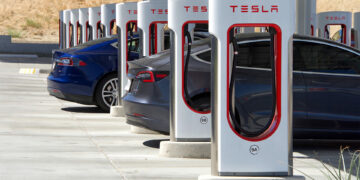



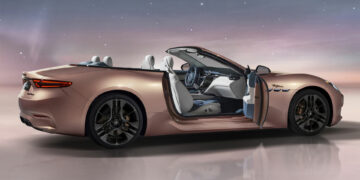

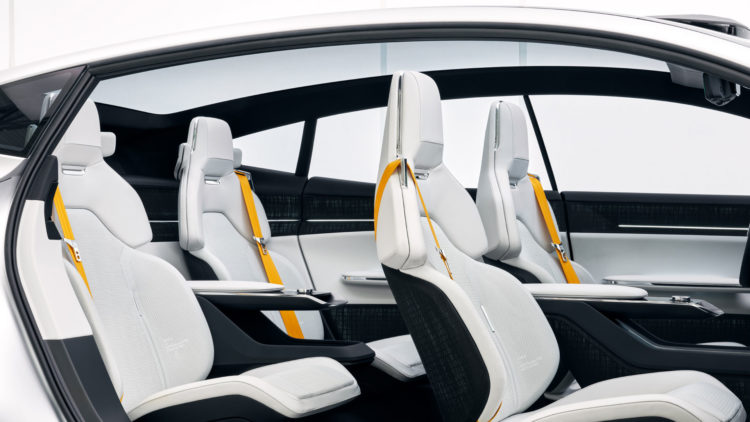
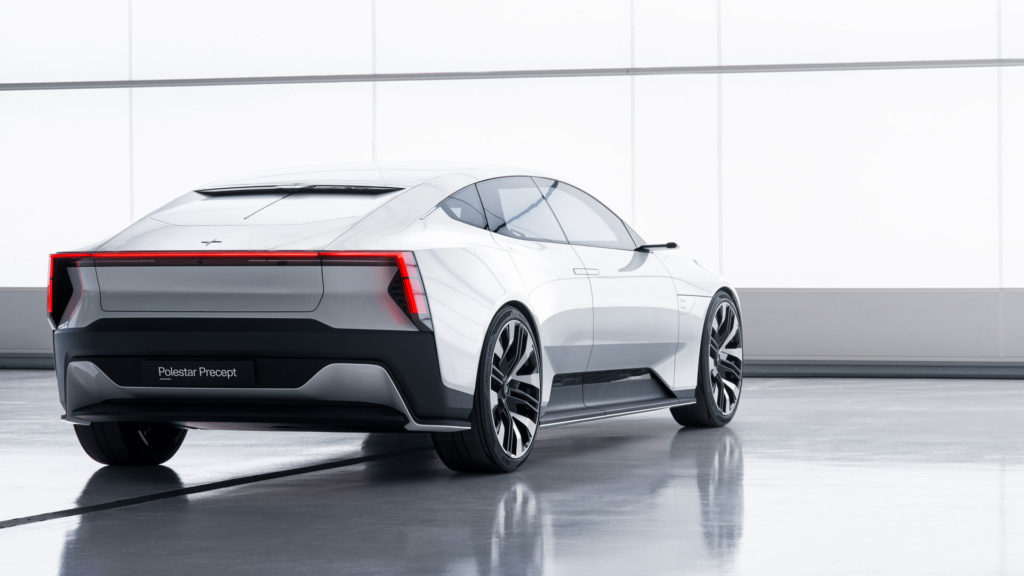

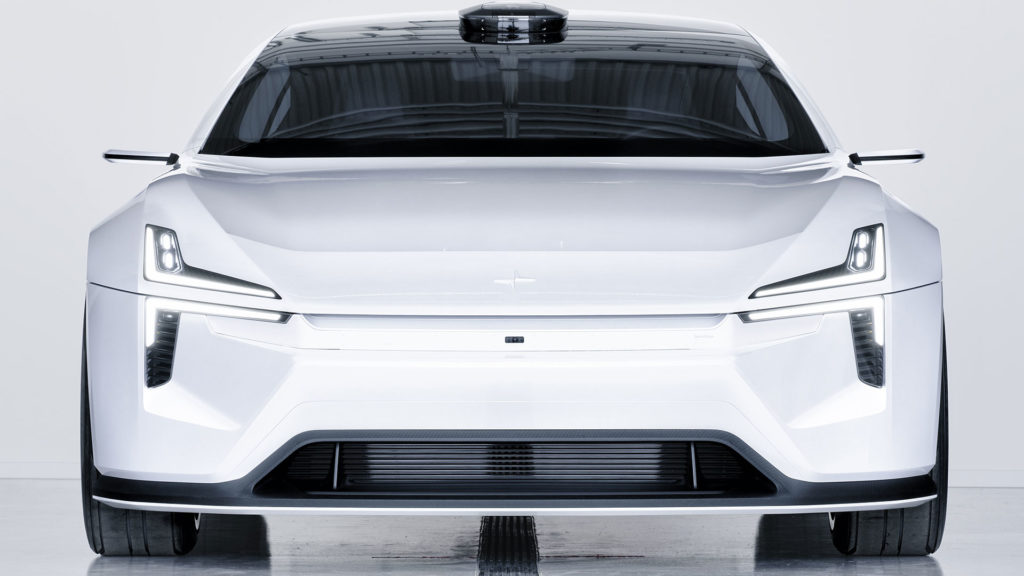
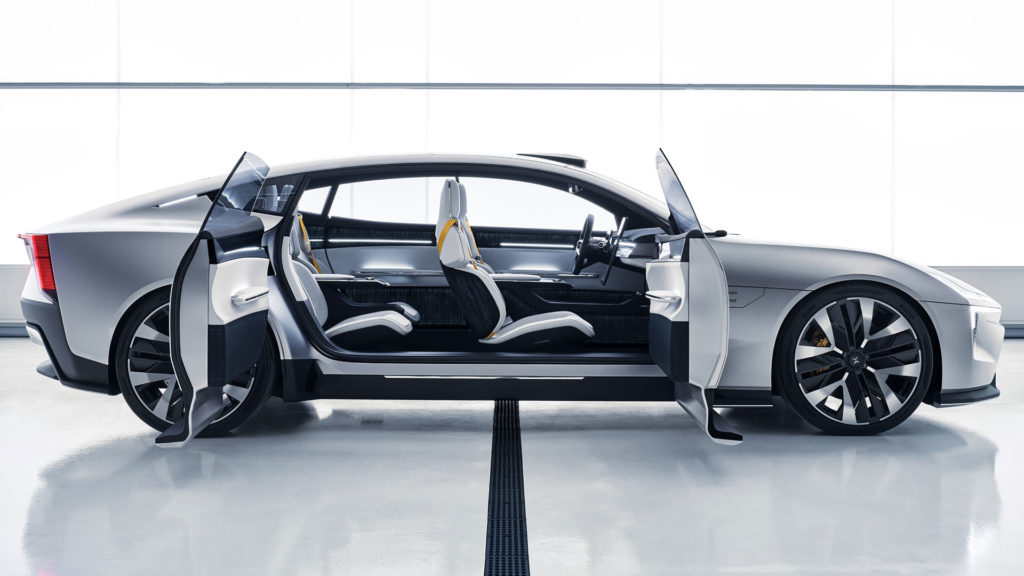











Discussion about this post